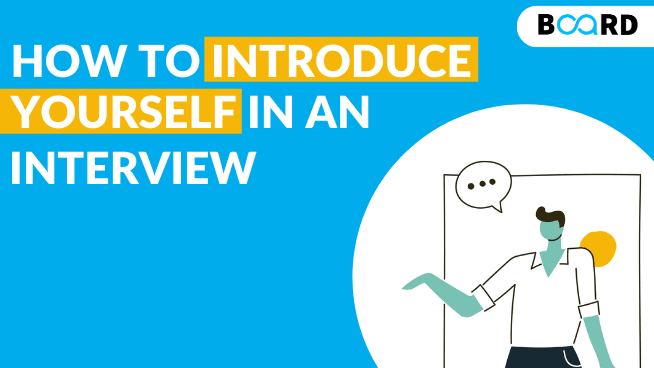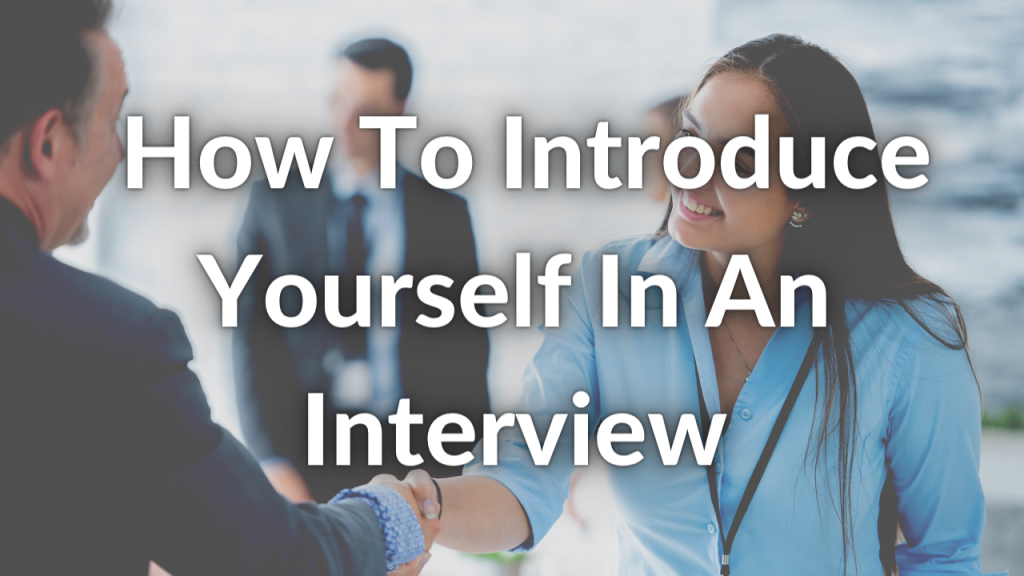Imagine this: You’re sitting in a dimly lit room, your palms are sweaty, and your heart races. You’ve been called in for an interview. The interviewer looks at you with a smile and says, “Tell me about yourself.” This is the moment you’ve been preparing for, but it’s easy to stumble. Let’s look at practical and straightforward steps on how you can nail this basic yet crucial question.
Three Common Interview Pitfalls
First, let’s explore the three most common mistakes people make while introducing themselves in an interview.
1. Talking About Hobbies
Many candidates start talking about their hobbies. They might mention how they love Netflix and chill, attempting to project themselves as interesting. But remember, you’re not on a date; you’re in an interview. Unless specifically asked, avoid discussing anything unrelated to the job.
2. Bragging Excessively
Another mistake is turning the introduction into a lengthy bragging session. Candidates often start listing all their certificates and achievements, which can be overwhelming. For instance, if a company is recruiting final-year engineering students from your college, don’t state the obvious: “I’m Tony Kakkar, a final-year mechanical engineering student with a CGPA of 4.2.” It’s redundant and wastes precious time.
3. Lack of Direction
Lastly, some introductions lack direction, leaving the interviewer unsure of how to proceed. Your introduction should guide the interviewer, giving them a clear sense of your relevant skills and experiences.
Composing a Captivating Interview Introduction

Now, how do you make your introduction both sensible and engaging? There are three key elements to include:
1. Your Skills
Begin by mentioning your core skills. These should align with the job description.
2. Your Projects or Experience
Next, discuss where you’ve applied these skills. This could be a project, a research paper, a documentary, or even your YouTube channel.
3. Your Achievements
Finally, if you have notable achievements, mention them. But if you don’t, that’s okay. Focus on the first two elements.
Framing Your Introduction
Here’s a simple step-by-step method to frame your introduction:
Step 1: Analyze the Job Description
Understand the skills the company is seeking.
Step 2: Highlight Your Key Skills
Select two to three of the most important skills that you possess.
Step 3: Reflect on Your Experiences
Identify where you have applied these skills. This is where your projects, patents, and portfolios come into play.
Step 4: Mention Your Achievements
If you have achievements related to these projects, highlight them. Discuss the significant milestones you’ve reached.
A Sample Interview Introduction
Let’s illustrate this with an example. Suppose you’re applying for a media company like TVF. Your introduction might look something like this:

“Sir, my name is Tony Kakkar. I specialize in three key skills. First, storytelling. I have an Instagram page where I’ve posted case study videos that have garnered over 4 million views in the past 1.5 years. Second, video editing. I use Final Cut Pro software, and I’ve included links to my videos in my resume. Lastly, event management. I organized and led a TED event at my college, coordinating a team of 43 people and achieving an NPS rating of 97 out of 100, one of the best ratings for a TED event in the country. Additionally, I am looking to specialize in sound design and Adobe After Effects.”
Benefits of a Well-Structured Introduction
A well-crafted introduction offers three major benefits:
1. Relevance
The interviewer immediately understands that you’re a relevant candidate.
2. Direction
Your introduction provides a clear direction for the interview. The interviewer is likely to ask about your projects and the challenges you faced, which you are well-prepared to discuss.
3. Confidence
Discussing familiar projects boosts your confidence, preventing you from going blank during the interview.
Final Thoughts on Interview Introductions

If you don’t possess the required skill sets for the job, the solution is straightforward: develop those skills first. Practice your introduction a day before the interview, preferably in front of a camera, to see how you come across. As long as you don’t sound like a robot, you’re on the right track to securing your dream job.
Remember, introducing yourself effectively can set the tone for the rest of the interview. By avoiding common mistakes and structuring your introduction thoughtfully, you can make a lasting impression and guide the interview in your favor.
At Inside Success Nigeria, we equip with the necessary knowledge you need to ace any interview. Kindly subscribe to our website and follow us on Instagram @insidesuccessnigeria for exclusive contents and updates.



Leave a Reply